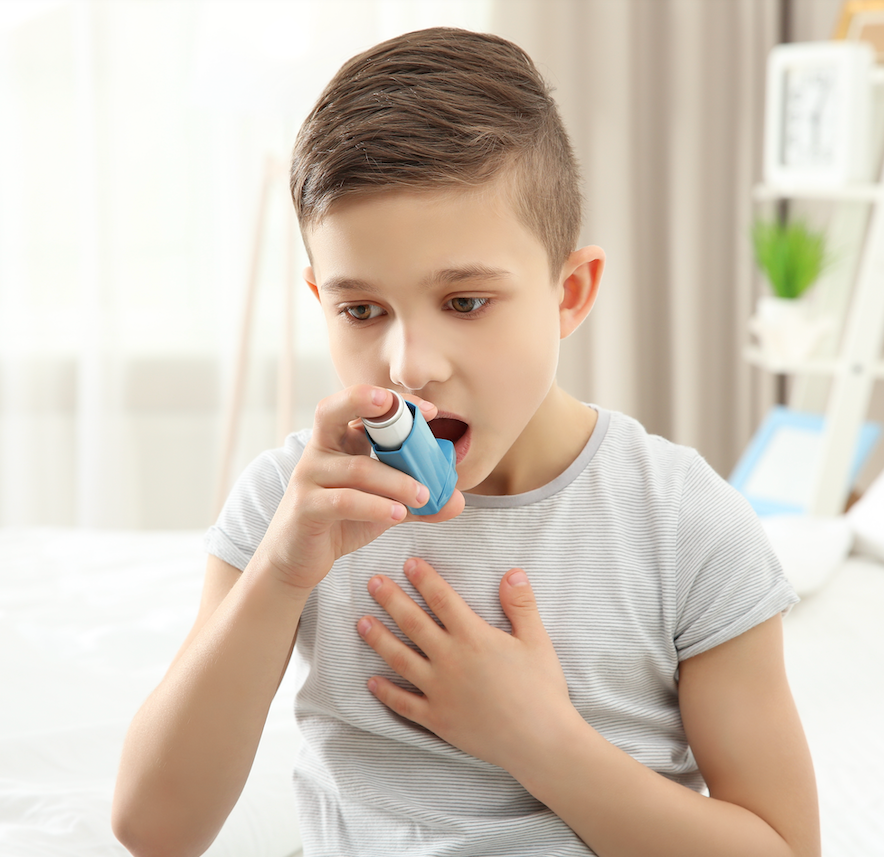News
Article
Dupilumab Led to Histologic Remission in High Percentage of Children with EoE
Author(s):
This analysis looked at children 1 to 11 years of age with eosinophilic esophagitis, highlighting the impacts of dupilumab on EoE.
Mirna Chehade, MD, MPH
Credit: Icahn School of Medicine at Mount Sinai

Dupilumab may lead to histologic remission among a substantially high percentage of children aged 1 - 11 with eosinophilic esophagitis (EoE), according to new findings, and a dupilumab regimen with greater exposure may lead to notable improvements.1
These findings represented the conclusion of new research led by Mirna Chehade, MD, MPH, from the Icahn School of Medicine at Mount Sinai’s center for eosinophilic disorders in New York. Chehade et al. noted that the LIBERTY EoE TREET phase 3 study had resulted in findings indicating dupilumab had improved symptomatic, histologic, endoscopic, and molecular outcomes among patients.2
“On the basis of these data, dupilumab was approved in the United States and European Union for the treatment of eosinophilic esophagitis in adults and adolescents weighing at least 40 kg,” Chehade and colleagues wrote. “In the current trial, we evaluated dupilumab in children 1 to 11 years of age with active eosinophilic esophagitis that was refractory to proton-pump inhibitor therapy.”
Background and Design
The investigators conducted their research in 3 phases, with the first part being a 16-week period in which a randomized, double-blind, and placebo-controlled design was utilized. Those qualified who had been featured in part A moved on to part B, a phase lasting 36 weeks with an extended active treatment period where subjects were kept unaware of their specific regimen.
There were 26 locations in the US and a single location in Canada used by the investigators for the study. Study participants could be aged 1 - 11 years and were required to have an active diagnosis of EoE.
They also were required to have a documented symptom history associated with EoE in the month prior to their screening and a peak esophageal intraepithelial eosinophil count of over 15 per high-power field in at least a single esophageal region following 8 weeks minimum of proton-pump inhibitor treatment.
Individuals without responses to proton-pump inhibition may have had more severe cases versus subjects from the general EoE patient population. Subjects without a prior esophageal biopsy were given proton-pump inhibitor treatment by the research team for a total of 8 weeks prior to a baseline esophageal biopsy being taken.
Those in the age range of the study with active EoE and no response to the proton-pump inhibitors were randomly assigned, 2:2:1:1, to a 16-week course of either higher-exposure or lower-exposure subcutaneous dupilumab therapy or placebo.
Following the conclusion of Part A, eligible participants in the dupilumab cohorts continued with the same treatment regimen, though subjects in the placebo arms were reassigned by the investigators to either receive higher or lower-exposure dupilumab therapy for a total of 36 weeks in Part B.
The research team’s main endpoint was determined to be histologic remission, defined as an esophageal intraepithelial eosinophil count peak of 6 or fewer per high-power field, at the 16-week mark.
Findings
In Part A, overall, the investigators reported that histologic remission had been seen among 68% of subjects in the higher-exposure arm, 58% of subjects in the lower-exposure arm, and only 3% among those in the placebo arm. They noted that remission rate differences between the higher-exposure and placebo arms had been 65 percentage points (95% confidence interval [CI], 48 to 81; P < .001).
Additionally, the research team found that the differences between the lower-exposure arm and the placebo arm had been a total of 55 percentage points (95% CI, 37 to 73; P < .001).
Major improvements in participants’ endoscopic, histologic, and transcriptomic outcomes had been observed by the team among those with the higher-exposure dupilumab regimen versus placebo. Fairly consistent improvements in these measures from the point of baseline to the 52-week mark in all participants were noted by the investigators, with improvements observed from baseline to the 16-week mark among those given dupilumab in Part A.
Occurrences of nausea, COVID-19, pain at injection sites, and headaches were reported in Part A to be at least 10 percentage points higher among those given dupilumab regardless of dosing regimen versus placebo. The research team noted serious adverse events among 3 individuals given dupilumab during Part A and among 6 in Part B.
“A major limitation of the trial was the reduced ability of the patients to report symptoms, owing to age-related limitations in cognitive and verbal development and to the adoption of compensatory feeding habits,” they wrote.
References
- Chehade M, Dellon ES, Maloney J, et al. Dupilumab for Eosinophilic Esophagitis in Patients 1 to 11 Years of Age. N Engl J Med. 2024 Jun 27;390(24):2239-2251. Doi: 10.1056/NEJMoa2312282. PMID: 38924731.
- Rothenberg ME, Dellon ES, Collins MH, et al. Efficacy and safety of dupilumab up to 52 weeks in adults and adolescents with eosinophilic oesophagitis (LIBERTY EoE TREET study): a multicentre, double-blind, randomised, placebo-controlled, phase 3 trial. Lancet Gastroenterol Hepatol 2023;8:990-1004.





